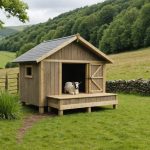As pet owners, we share a unique bond with our feline companions. Understanding their health and well-being is crucial, especially when it comes to conditions like urinary tract infections (UTIs). These infections can cause significant discomfort and potentially lead to serious health complications if not addressed promptly. In this article, we will explore the signs that your cat may be suffering from a UTI, how to identify these symptoms, and what steps you can take to ensure your beloved pet receives the care they need.
Common Symptoms of Urinary Tract Infections in Cats
When it comes to recognizing a urinary tract infection in your cat, awareness of symptoms is key. Cats may exhibit a range of signs that indicate they are experiencing discomfort or distress related to their urinary health. One of the most common symptoms you might observe is frequent trips to the litter box. You may notice your cat straining to urinate, or perhaps they seem to produce only a small amount of urine each time. This behavior can often be mistaken for simple bathroom habits, but it is a significant red flag.
Additional reading : What are the best practices for transitioning my cat to a new type of food?
Further, you may observe your cat crying out or showing signs of pain while trying to urinate. This vocalization is often a clear indicator that something is wrong. Additionally, watch for any changes in your cat’s urine. If you notice blood in their urine or a strong, unusual odor, these are serious signs that warrant immediate veterinary attention.
Another sign to keep an eye out for is excessive grooming around the genital area. Cats suffering from UTIs may lick this area more than usual in an attempt to soothe their discomfort. Behavioral changes can also accompany a UTI; your cat may become more withdrawn, less playful, and show signs of lethargy. If you observe any combination of these symptoms, it is essential to consult your veterinarian as soon as possible.
Additional reading : Ultimate guide to temperature management for keeping hairless cats, including peterbalds, cozy and comfortable
Risk Factors for Urinary Tract Infections in Cats
Understanding the risk factors that can contribute to urinary tract infections in cats is vital for prevention and early detection. Various elements can increase the likelihood of your cat developing a UTI. One significant factor is age; older cats are often at a higher risk due to changes in their urinary tract and immune system. Furthermore, cats that are overweight or have a sedentary lifestyle may also be more susceptible to urinary issues.
Diet plays an essential role in your cat’s urinary health as well. Diets high in magnesium and certain other minerals can lead to the formation of crystals in the urine, increasing the likelihood of infections. If your cat primarily consumes dry food, consider discussing their diet with your veterinarian. They may recommend switching to a high-quality wet food or adding water to their meals to help flush the urinary tract.
Additionally, stress can be a factor in urinary issues. Cats are creatures of habit, and disruptions in their environment can lead to stress, which may contribute to urinary complications. Changes such as moving to a new home, the introduction of new pets, or any significant alterations in routine can create stress responses in cats. Ensuring a stable, calm environment for your cat is essential for their overall well-being and urinary health.
Diagnostic Procedures for Urinary Tract Infections in Cats
If you suspect that your cat might have a urinary tract infection, it is crucial to seek veterinary attention for an accurate diagnosis. Your veterinarian will begin with a thorough physical examination and discuss your cat’s symptoms and medical history. This initial assessment is vital for determining the next steps.
One of the first diagnostic tools your veterinarian may use is a urinalysis. This test involves analyzing your cat’s urine to check for the presence of bacteria, blood, and crystals. The results can reveal valuable information about the state of your cat’s urinary tract. In some cases, your veterinarian might recommend a urine culture, which is a more detailed test that can identify the specific type of bacteria causing the infection.
In addition to urine tests, imaging techniques such as X-rays or ultrasounds may also be employed. These procedures help visualize the urinary tract and identify any abnormalities, such as stones or blockages, that could be contributing to your cat’s condition. Understanding these diagnostic procedures can help you feel more prepared for your visit to the veterinarian, ensuring that you can provide all necessary information about your cat’s health.
Treatment Options for Urinary Tract Infections in Cats
Upon confirming a urinary tract infection, your veterinarian will suggest a treatment plan tailored to your cat’s specific needs. Antibiotics are typically the first course of action, as they effectively combat the bacterial infection. It is essential to follow the prescribed course of antibiotics thoroughly, even if your cat appears to improve before finishing the medication. Incomplete treatment can lead to a recurrence of the infection or the development of antibiotic-resistant bacteria.
In addition to medication, your veterinarian may recommend supporting your cat’s urinary health through dietary changes or supplements. Some foods can help dissolve urinary crystals, thus reducing the risk of further infections. Additionally, ensuring your cat has access to fresh water at all times encourages proper hydration, which is crucial for flushing the urinary tract.
In more severe cases, or if your cat is experiencing blockages, hospitalization may be necessary for more intensive treatment. Procedures to remove stones or blockages might be performed, and intravenous fluids may be administered to ensure your cat remains hydrated and stable. Your veterinarian will guide you through each step of the treatment process, providing you with the information you need to help your cat recover effectively.
As pet owners, it is our responsibility to be vigilant about our cats’ health, particularly regarding potential urinary tract infections. Recognizing the symptoms, understanding the risk factors, and knowing the diagnostic and treatment options can empower you to take swift action when your cat shows signs of distress. While UTIs can be serious, they are typically manageable with prompt veterinary care.
Always prioritize your cat’s well-being by maintaining a healthy diet, ensuring proper hydration, and providing a stress-free environment. Regular veterinary check-ups can also help catch potential issues before they develop into more serious conditions. By remaining proactive and attentive, you can significantly contribute to your feline friend’s health and happiness.










